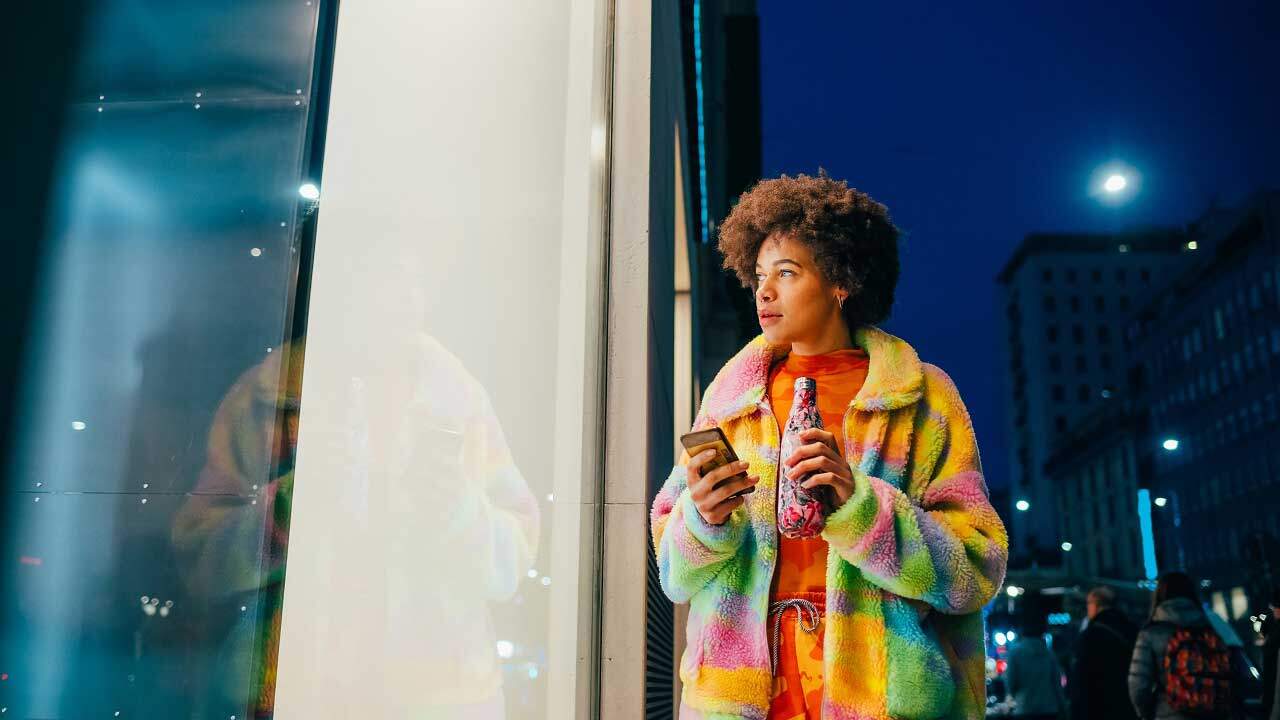Next Up: Digital Marketing Trends to Watch

The most successful digital marketing strategies are those that adapt and evolve with the times.
Trends and tactics come and go like ocean tides. Just look at how quickly Dalgona coffee had everyone whipping up grounds with sugar, only for people to move on to indoor plants and Among Us in a heartbeat. But some “trends” stick around longer and become sustainable campaign strategies.
As the year progresses, new marketing trends have emerged as consumer behaviours and demands change. If you want your brand to retain customers while scaling up and staying ahead of competition, then you’ve got to keep up. Let’s look into 5 digital marketing trends to watch, now and in the future.
Gen Z: The New Audience for Digital Marketing
For a long time now, brands have been trying to convert millennials into consumers. They’ve tapped into nostalgia with 90s–00s elements. They’ve used memes and influencers. They’ve even followed the generation across the evolution of online spaces – from MySpace to TikTok.
But a new generation is crossing the horizon: Gen Z. The kids of the new century are all grown up; they’re entering the workforce and gaining purchasing power. Millennials still make up a large proportion of digital buyers (about 37.4% in the U.S. in 2020), but watch out. By 2025, it’s expected Gen Z will account for 85 million of all U.S. consumers.
The first true online generation will redefine digital marketing as more brands begin targeting them. The first major change to consider is amping up your social media strategies. About 83% of Gen Z shops on social media, either by using built-in e-Commerce tools (e.g. Instagram shops or Facebook Marketplace) or relying on social media platforms to discover brands and products.
Moreover, zoomers are more likely to demand accountability and transparency from brands they support. 23% have reported boycotting a brand for going against their principles, and almost ⅓ will block or unfollow a brand’s social media accounts for perceived inauthenticity. There is no more room for a “neutral” stance on social issues – if you lack diversity or inclusivity, Gen Z will call you out.
And if you do take a stand but get exposed for doing it for clout? Expect no mercy.
5 Digital Marketing Trends to Watch
With this shift in demographics for targeted brand audiences comes a new wave of digital marketing trends. Here are 5 trends to follow as we move forward in the Internet age.
#1 — AI and Machine Learning
AI hit the digital sphere with all the force of a great typhoon. (Ha!) Programs like ChatGPT and Midjourney have skyrocketed in relevance since their launch, especially as their developers have refined their processes. And brands have now begun to use them beyond generating emails.
AI and ML tools can make the data collection and analysis process significantly more efficient. It’s difficult for humans to match the scale and speed of modern AI, especially when it comes to customer data. Moreover, programs can run algorithms based on these data sets to predict trends and plan strategies.
Besides the administrative side, brands are also using AI in actual campaigns. Levi’s, for example, recently announced it will be testing AI-generated models for their clothing (to much controversy). Meanwhile, Brave Bison collaborated with the WWF to create images for their #WorldWithoutNature campaign.
#2 — Live streams
Video games made the concept of live streams popular, from eSports competitions to Genshin Impact playthroughs. The industry has boomed in recent years, and has even expanded to social media platforms such as Twitter Spaces, Facebook Live, and Instagram Live Rooms.
“Live stream shopping” combines the live video of a stream with online shopping. Influencers, presenters, and even small-business owners showcase products on a live stream. The audience can then interact by asking questions, requesting different angles or specifications, and making comments. They can even bid on products in real-time.
The biggest advantage of live stream marketing is the low barrier of entry. It only requires a webcam or mobile device and an internet connection. Brands can use streams to connect and engage with their target audience while driving up sales and website traffic.
#3 — Brands for a cause
Gen Z and millennials hold the most purchasing power at the moment, and make up a large proportion of consumers. This means their behaviours and principles will dictate the way brands market their products and conduct online campaigns.
Half of zoomers and 41% of millennials have reported placing a premium on social responsibility and integrity. They’re more likely to support brands that advocate for a cause, especially one that affects them personally. Conversely, they’re also more likely to boycott or hit back at brands that go against social issues they support.
Businesses are now shifting their marketing tactics to ones that are more inclusive and diverse, in an effort to show social responsibility. There’s also been rising support for minority-owned businesses, from brands like Fenty and Yitty to small Etsy sellers. And companies are now aware that they can’t hide their dirty secrets – if they’ve covered up controversy, the internet will know. (Just ask Chick-fil-A and Blizzard.)
#4 — Gamification and interaction
80% of smartphone owners play mobile games on their devices, while there are an estimated 3 billion active video gamers worldwide. Given this, more and more companies are adding interactive features and game design elements to their websites – a concept called “gamification.”
This can be anything from having users spin a wheel for a discount, to Interland’s informational mini-games. These elements are novel and attractive ways to boost client retention, increase word-of-mouth advertising, and gain insight into your audiences.
Some ways to gamify your website and marketing strategy include adding mini-games or polls, implementing virtual reality elements, creating software demos and simulations, and using interactive maps or infographics.
#5 — User-generated content
It would be every brand’s dream if a product would market itself. But following the advent of social media, they get the next best thing: consumers advertising products and services for them.
User-generated content (UGC) is any form of content posted by an individual on their own account or platform. Your friend Instagramming their latest makeup haul or your cousin posting about their new robot vacuum on Facebook – that’s all UGC. On the flip side, that Twitter rando calling for a boycott of a sportswear company is also UGC.
This form of marketing is a unique opportunity for marketers to showcase a brand’s “authenticity.” Look at how the cronut exploded in popularity after a GrubStreet food blogger documented their experience. UGC features real content by real people – and consumers are 2.4x more likely to trust it versus brand-created advertising.

Beyond Trends: Inclusivity and Diversity in Marketing
Looking beyond digital marketing trends, consumers are calling for more diversity and inclusivity in marketing. The human population is varied and distinct, with different races, genders, sexualities, body types, and neurodiversities – factors that should be reflected in media and marketing.
People have more power now to influence marketing and consumption. They’re no longer passive, and they’ve very capable of making their feelings and values known. Consumers are very willing to drop or boycott brands that do not represent themselves and their values. The message for brands is clear: lack of inclusivity and diversity hurts brand reputation and sales.
For too long, companies have focused on marketing using a specific demographic in their campaigns. This results in the rest of the population feeling excluded, and often this is an intended outcome. But if brands want to reach audiences of different backgrounds, they cannot keep using these age-old tactics.
It’s time for businesses to be proactive about inclusivity in their marketing strategies. And this goes beyond simply including plus-size models in ads or having more racial diversity in ambassadors. For example, consider neurodiversity in content marketing, or integrating different cultural traditions into marketing campaigns.
C-suite executives and marketers also need to step back and asses personal biases that have stemmed from societal influence. We often thing “well that’s just how things are,” when that’s far from the truth. If brands do not consider minority perspectives, check their affinity bias, and challenge stereotypes, then they’ll simply be left behind.
Don’t Play Catch-Up in Marketing
In marketing, it’s easy to fall behind in the age of social media and the internet. Sometimes we catch onto digital marketing trends and memes when it’s too late and they’re no longer relevant. It’s essential to keep ahead of the curve and adapt your marketing strategies to maintain connections with your audience. If you have to play catch-up, then you’ll end up losing out.
Stay ahead of the competition with Kika as your marketing partner. Our digital marketing services bring together technical expertise, data analysis, and promotional skills so we can elevate your brand to the next level. From content marketing to social media, we’ll devise strategies customized to your brand that maximize both your exposure and your results.





